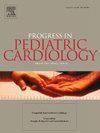运动员赛前筛查和心电图
IF 0.8
Q4 PEDIATRICS
引用次数: 0
摘要
背景:每年每5万到8万人中就有1人发生心脏骤停。赛前筛查可以识别出有发生心脏骤停风险的运动员。本文的目的是回顾心脏骤停的病因,参与前筛查,以及心电图在筛查运动员心脏问题中的应用。心脏骤停可能发生在患有肥厚性心肌病、冠状动脉异常起源、致心律失常的右室心肌病、扩张性心肌病、主动脉夹层、心肌炎、wolff -帕金森- white综合征、长QT综合征、Brugada综合征、心绞痛、主动脉瓣狭窄、主动脉缩窄、先天性心脏传导阻滞、短QT综合征或冠状动脉疾病的年轻运动员身上。参与前筛查包括病史、体格检查和心电图。有一些筛查指南可供参考。美国心脏协会的14项筛查方案包括7个关于个人病史的问题,3个关于家族史的问题,以及4个体检结果。心电图可以识别心肌病、Wolff-Parkinson-White综合征和长QT综合征等在体格检查中未表现出来的心脏疾病。心电图在筛查中的广泛应用可能受到成本和从业人员培训的限制。在筛查中使用心电图的成功实施可能取决于对从业人员进行解释年轻运动员心电图的具体培训。重要的是要确定专家,他们可以帮助进一步评估任何与危重心血管疾病一致的发现。本文章由计算机程序翻译,如有差异,请以英文原文为准。
Preparticipation screening and electrocardiograms in athletes
Background
Sudden cardiac arrest occurs in 1 per 50,000 to 80,000 people per year. Preparticipation screening may identify athletes who may be at risk for developing sudden cardiac arrest.
Aim of review
The purpose of this article is to review the etiologies of sudden cardiac arrest, preparticipation screening, and use of electrocardiograms in screening athletes for cardiac problems.
Key scientific concepts of review
Sudden cardiac arrest may occur in young athletes who have hypertrophic cardiomyopathy, anomalous origin of a coronary artery, arrhythmogenic right ventricular cardiomyopathy, dilated cardiomyopathy, aortic dissection, myocarditis, Wolff-Parkinson-White syndrome, long QT syndrome, Brugada syndrome, commotio cordis, aortic valve stenosis, coarctation of the aorta, congenital heart block, short QT syndrome, or coronary artery disease. Preparticipation screening may include history, physical examination, and an electrocardiogram. Several guidelines for screening are available. The American Heart Association 14-element screening protocol includes seven questions about personal history, three questions about family history, and four physical examination findings. The electrocardiogram may identify cardiac conditions such as cardiomyopathy, Wolff-Parkinson-White syndrome, and long QT syndrome that may not manifest on physical examination. Widespread use of an electrocardiogram in screening may be limited by cost and practitioner training. Successful implementation of the use of an electrocardiogram in screening may depend on specific training for practitioners in interpreting the electrocardiogram in young athletes. It is important to identify specialists who may help with further evaluation of any findings consistent with critical cardiovascular disease.
求助全文
通过发布文献求助,成功后即可免费获取论文全文。
去求助
来源期刊

PROGRESS IN PEDIATRIC CARDIOLOGY
PEDIATRICS-
CiteScore
0.90
自引率
11.10%
发文量
69
审稿时长
75 days
期刊介绍:
Progress in Pediatric Cardiology is an international journal of review presenting information and experienced opinion of importance in the understanding and management of cardiovascular diseases in children. Each issue is prepared by one or more Guest Editors and reviews a single subject, allowing for comprehensive presentations of complex, multifaceted or rapidly changing topics of clinical and investigative interest.
 求助内容:
求助内容: 应助结果提醒方式:
应助结果提醒方式:


